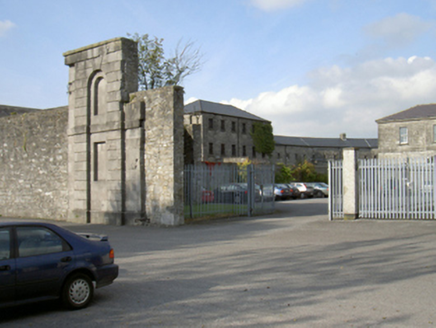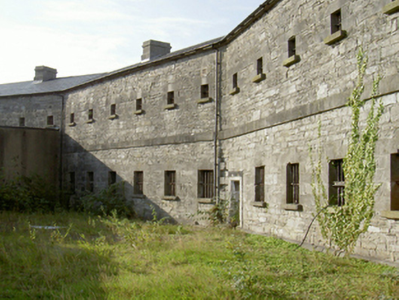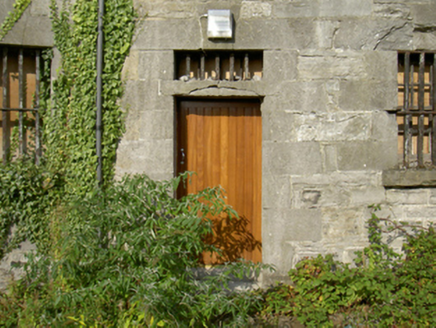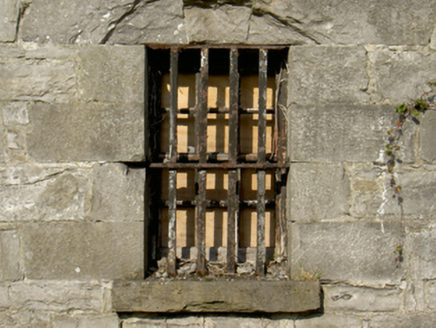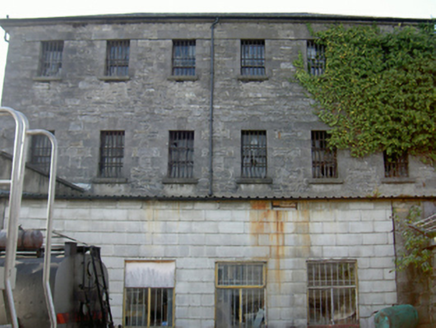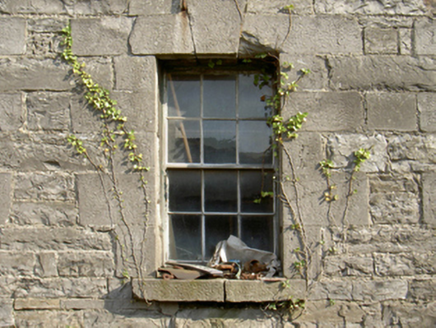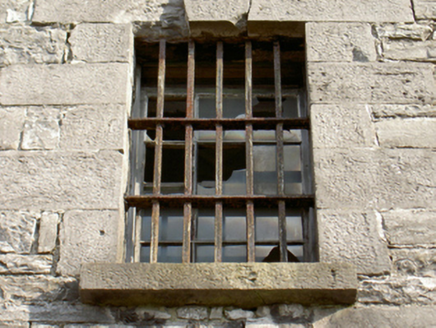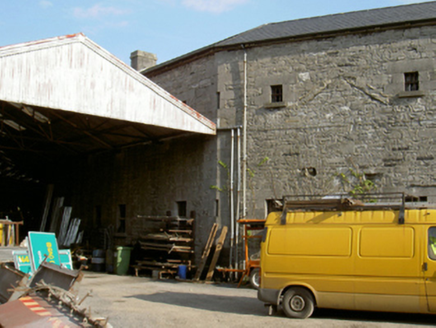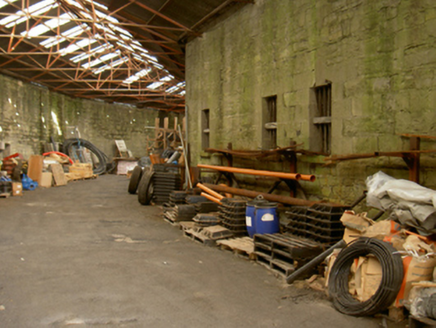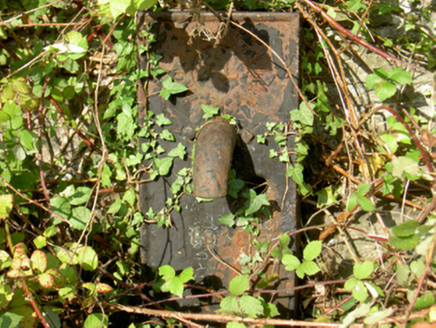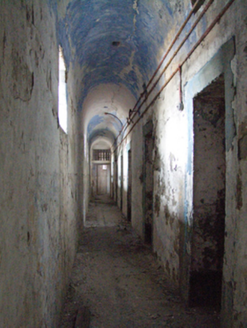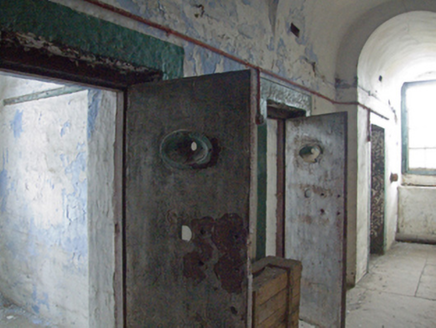Survey Data
Reg No
32008010
Rating
National
Categories of Special Interest
Architectural, Artistic, Historical, Social, Technical
Original Use
Prison/jail
Date
1810 - 1820
Coordinates
169832, 335811
Date Recorded
12/10/2004
Date Updated
--/--/--
Description
Remains of gaol, built 1815-8; opened 1818, including series of five six-bay two-storey cell blocks on a polygonal plan; six-bay three-storey "pavilion" on a rectangular plan with six-bay three-storey rear (west) elevation. Occupied, 1901; 1911. Closed, 1956. Partly demolished, 1981. Now disused. Pitched slate roofs with clay ridge tiles, limestone chimney stacks on repointed cut-limestone chamfered bases having cut-limestone stringcourses below capping, and cast-iron rainwater goods on cut-limestone eaves retaining cast-iron downpipes; hipped slate roof ("pavilion") with clay ridge tiles, and cast-iron rainwater goods on cut-limestone eaves retaining cast-iron downpipes. Part creeper- or ivy-covered coursed rubble limestone walls on overgrown cut-limestone plinth with cut-limestone stringcourse; part creeper- or ivy-covered coursed rubble limestone walls ("pavilion") with margined tooled hammered limestone flush quoins to corners. Paired square-headed door openings with overgrown thresholds, and margined tooled hammered limestone block-and-start surrounds framing replacement timber boarded doors having overlights behind cast-iron bars. Square-headed window openings (ground floor) with margined tooled cut-limestone sills, and margined tooled hammered limestone block-and-start surrounds centred on keystones framing six-over-six timber sash windows behind cast-iron bars. Square-headed window openings (first floor) with margined tooled cut-limestone sills, and margined tooled hammered limestone block-and-start surrounds framing cast-iron bars. Square-headed window openings ("pavilion") with margined tooled cut-limestone sills, and margined tooled hammered limestone block-and-start surrounds centred on keystones framing six-over-six or six-over-three (top floor) timber sash windows behind cast-iron bars. Square-headed window openings (west) with margined tooled cut-limestone sills, and margined tooled hammered limestone block-and-start surrounds centred on keystones framing six-over-six timber sash windows behind cast-iron bars. Square-headed window openings (top floor) with margined tooled cut-limestone sills, and margined tooled hammered limestone block-and-start surrounds framing cast-iron bars. Set in shared grounds.
Appraisal
A gaol erected by John Lynn (d. 1864) to designs by Richard Ingleman (1777-1838) representing an important component of the early nineteenth-century built heritage of County Sligo with the architectural value of the composition, one given as the best surviving Irish example of the "Panopticon" developed by the philosopher and social theorist Jeremy Bentham (1747-1832), confirmed by such attributes as the polygonal plan form centring on a governor's house (see 32013003); the construction in unrefined local fieldstone with "sparrow pecked" deep grey Ballysadare limestone dressings demonstrating good quality workmanship; and the diminishing in scale of the openings on each floor producing a graduated tiered visual effect with those openings showing stolid Georgian glazing patterns behind characteristic bars. Although long vacant following the Sligo Prison Closing Order (1956), and thereafter subject to piecemeal demolition, the form and massing survive intact together with substantial quantities of the original fabric, both to the exterior and to the interior where vaulted cells show graffiti and inscriptions highlighting the modest artistic potential of the composition. NOTE: The gaol has known celebrated detainees including Michael Davitt (1846-1906) who was briefly imprisoned in 1879 following his speech to the first meeting of the Land League held in Gurteen; Michael Collins (1890-1922) who was sentenced to three weeks solitary confinement following his arrest and trial for making a seditious speech calculated to cause disaffection in County Longford; Francis Joseph "Frank" Carty (1897-1942) who was the subject of a daring prison break at the height of the War of Independence (1919-20); and the boxer-cum-thespian Joseph "The Gorgeous Gael" Doyle (1913-78) who was sentenced to four months in prison for issuing a "bounced cheque" (1947).
